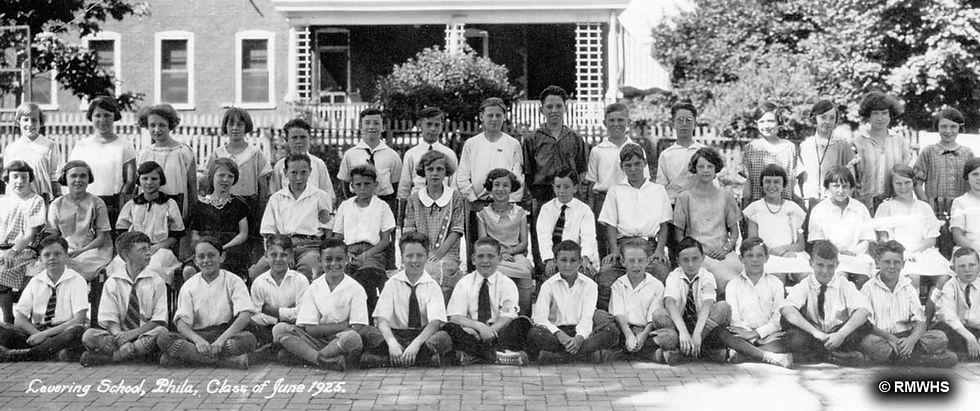Happy 4th of July
- Georgie Gould
- Jul 4, 2021
- 3 min read
Updated: Jun 14, 2022
A Tribute to Samuel Lawson: Founder of Our Independence Day Parade
In 1831, Samuel Lawson, a Sunday School teacher at the Fourth Reformed Church in Manayunk (then still a neighborhood within Roxborough Township, Philadelphia County) thought his students should have a healthy and happy Independence Day celebration outdoors. That year, Samuel organized a Sunday School picnic on the 4th of July with a procession by the Sunday School children marching through the streets of town. This was the beginning of one of the most cherished traditions of the 21st Ward and has become a staple of the Independence Day festivities for generations of families in our area spanning nearly 200 years.

Samuel Lawson was born in Rawdon, Yorkshire, England, on December 23, 1799. A wool sorter by trade, Samuel came to this country in 1828 and settled in the growing neighborhood of Manayunk where mills thrived along the banks of the Schuylkill River.
It had been the custom among the Sunday Schools where Samuel lived in England to hold picnics on Whit Friday or Whit Monday, and Samuel thought his Sunday School here in America could observe such a tradition in celebration of the 4th of July. The first 4th of July picnic Samuel organized was held on a hill in Manayunk during the summer of 1831. The success of this picnic was repeated every year thereafter. Soon other churches in the community began to parade through the streets on 4th of July mornings and host their own picnics in the afternoon.

As years passed, the Sunday Schools increased in size as well as in number with more denominations joining in the event. Eventually more elaborate preparations were being made for the various churches' celebration of Independence Day. Ultimately official committees were formed to prepare for the annual parades and picnics. The parades soon became great spectacles of color, music, and religious sentiments which have endured to present day. Today the parades often bring the return of former residents of the area back to their old neighborhoods to meet and socialize with family, friends, and former neighbors to relive some of the happy memories of years gone by, witness the parade, and participate in the country's birthday celebration.

Samuel Lawson died August 12, 1887, at the age of 88 and was buried in his family plot in West Laurel Hill Cemetery. His son, Samuel Lawson, Jr., wanting to honor his father's memory, left a legacy of $2000 to the Fourth Reformed Church and $2000 for the First Baptist Church in Manayunk. With it, Samuel Lawson, Jr., stipulated the interest of these legacies was to be used to help defray the expense of the 4th of July picnics so his father's inspired tradition would continue for years to come.
In 1931, during the one 100th anniversary of the July 4th event, a bronze tablet memorializing Samuel Lawson was placed by the 24 Sunday Schools of the 21st Ward on the lawn of the Fourth Reformed Church. In 1969, the tablet went missing following the church's disbandment, but -- through the efforts of the 21st Ward Fourth of July Association Committee, its past President, Richard Bate, Sr., and the financial support of the Tri-Cen '90 Committee -- a new tablet was made in memory of Samuel Lawson.

Today it is tradition for the Samuel Lawson memorial plaque to be carried at the front of the parade by the event's designated "lead church" for that given year. After the parade, the plaque is held on display by the "lead church" until the next year when a new church is selected for the honor. There has been a parade and picnic every year since 1831 with only two exceptions for the safety of the participants and onlookers. The first time it was canceled due to an extraordinary torrential downpour and the second time was in 2020 due to Covid-19 in 2020. Researched and compiled by Nicholas Myers, Roxborough Manayunk Wissahickon Historical Society, with special credits to: Richard Bate, Sr., Jane Gottfried, Trudy Smith, June 1991, revised May 2021. Revised and edited by Georgie Gould, RMWHS, July 2021 & June 2022.



Comments